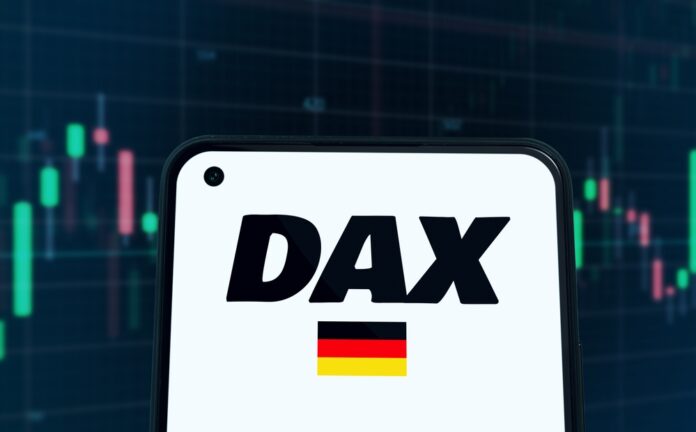Discover what the DAX 40 is, how it’s composed, how to invest in it in 2025, and why it remains a key benchmark in the European stock market landscape. A comprehensive, up-to-date guide designed for both active traders and long-term investors.
What Is the DAX and Why Is It So Relevant for Investors?
If you’ve been involved in the financial markets for some time, you know that certain indices serve as barometers of the global economy. The DAX 40 is one of them. Regardless of which continent you operate from, this index is an indispensable benchmark for any well-structured investment portfolio.
Formerly known as the DAX 30, the DAX 40 is Germany’s leading stock market index. It is composed of the 40 largest and most liquid companies listed on the Frankfurt Stock Exchange. The expansion from 30 to 40 companies, which took place in September 2021, aimed to improve sector representation and more accurately reflect the German economy.
This index combines industrial, technology, pharmaceutical, and consumer companies such as Siemens, Bayer, SAP, and Allianz—all with global reach and significant weight in their respective sectors.
How Is the DAX 40 Composed and What Are Its Criteria?
The DAX is managed by Deutsche Börse, which periodically reviews the composition of the index under strict criteria:
- Free-float-adjusted market capitalization
- Trading volume (liquidity)
- Strict accounting controls (following the Wirecard case)
- Sector diversity (no fixed quotas, but balanced representation)
This approach has allowed the DAX to modernize, incorporating companies from emerging sectors such as Airbus and Zalando, making it a dynamic, robust index aligned with new market trends.
An Economic Barometer for Germany (and the World)
Germany is Europe’s largest economy and the fourth largest globally. In this context, the DAX not only reflects the financial pulse of Germany but also serves as a leading indicator for the European and global economy.
Many of its companies have a strong international presence. For example, BMW generates a large part of its revenue outside Germany, allowing the DAX to react even to events in Asia, America, or emerging markets. This makes it valuable for macroeconomic analysis and strategic investment decisions.
Technical and Fundamental Analysis of the DAX
Technical Outlook
The DAX responds clearly to technical levels such as support, resistance, and classic patterns (triangles, channels, etc.). Tools such as RSI, MACD, or moving averages often provide reliable signals due to the index’s volume and liquidity.
In 30-minute, 4-hour, or daily time frames, it’s possible to detect key breakouts that allow for high-precision strategies, especially during European sessions.
Fundamental Outlook
From a fundamental perspective, macroeconomic indicators such as the manufacturing PMI, exports, or the IFO index should be monitored. The performance of the euro also has an influence, given the export orientation of many DAX companies.
Reviewing the quarterly results of key companies such as SAP or Deutsche Bank is essential to anticipate the index’s movements.
Intraday or Long Term? The DAX Offers Both Options
The DAX 40 suits different investment styles:
- For traders: Its moderate volatility, tight spreads, and availability in futures make it ideal for active trading.
- For long-term investors: Its solid track record, corporate quality, and dividend reinvestment make it a powerful tool for building a diversified portfolio.
DAX Companies to Keep an Eye On
Although the index includes 40 companies, some stand out for their leadership and strength:
- SAP: Enterprise software giant
- Siemens: Leader in automation and infrastructure
- Allianz: Heavyweight in insurance and asset management
- Bayer: Strong presence in pharmaceuticals and agrochemicals
- Deutsche Telekom: Stable growth and attractive dividends
Investing in these companies individually may be an interesting option for those seeking selective exposure within the DAX universe.
How to Invest in the DAX? ETFs, Futures, and Derivatives
There are multiple ways to trade this index:
- ETFs (such as the iShares Core DAX UCITS ETF): Ideal for passive investing
- DAX futures (FDAX): Used by professionals, with high liquidity and efficient execution
- Barrier options and options on the DAX: Allow for hedging, leverage, or income-generation strategies
Your choice will depend on your profile. If you are conservative, ETFs are a safe and diversified option. If you prefer more active strategies, futures provide greater control and operational speed.
Historical Highlights of the DAX
Since its creation in 1988, the DAX has offered an average annual return between 7% and 9%, including periods of expansion (2003–2007, 2012–2019) and sharp declines (2008, 2020, 2022).
A crucial fact: the DAX automatically reinvests dividends, which significantly increases its long-term performance. This detail, often overlooked by novice investors, explains much of its solid track record.
Investing in the DAX 40 with OnEquity
OnEquity allows you to invest in some of the world’s most traded stock indices, including the NASDAQ 100, DOW 30, DAX 40, FTSE 100, and EURO STOXX 50. The platform offers several advantages:
- Access to all major U.S., European, and Asian indices
- Leverage of up to 1:1
- Ultra-competitive spreads
- No commissions
Conclusion: The DAX 40, an Index for All Types of Investors
The DAX 40 not only represents Germany’s largest companies but also acts as an economic barometer for Europe and the world. Its diverse composition, constant evolution, and global relevance make it an essential benchmark for any investment strategy—day, short, medium, or long term.
Whether you’re seeking stable exposure through ETFs or prefer to trade futures and options, the DAX offers powerful tools, transparency, and a proven track record that positions it as one of the most reliable indices on the international scene.



